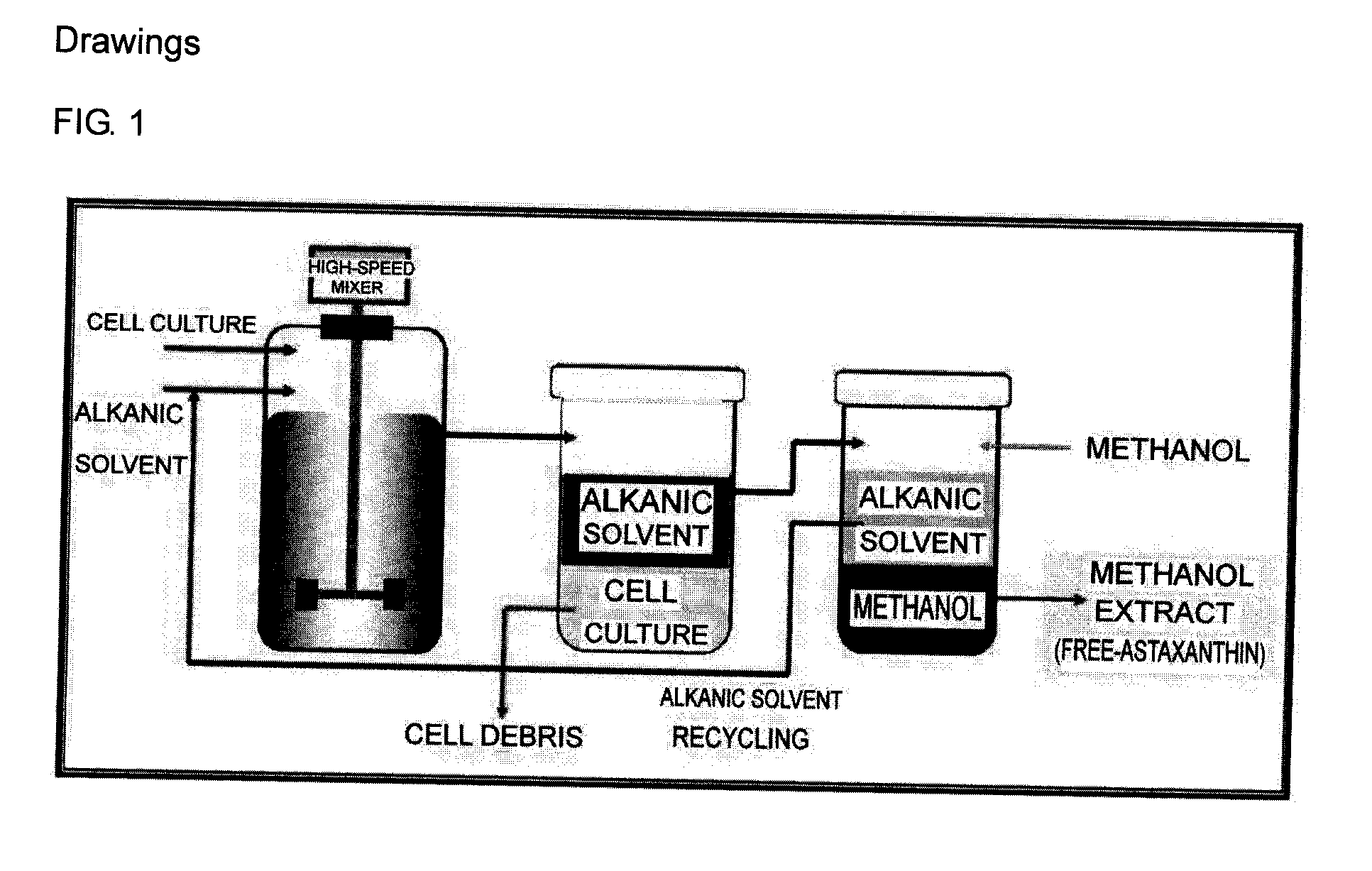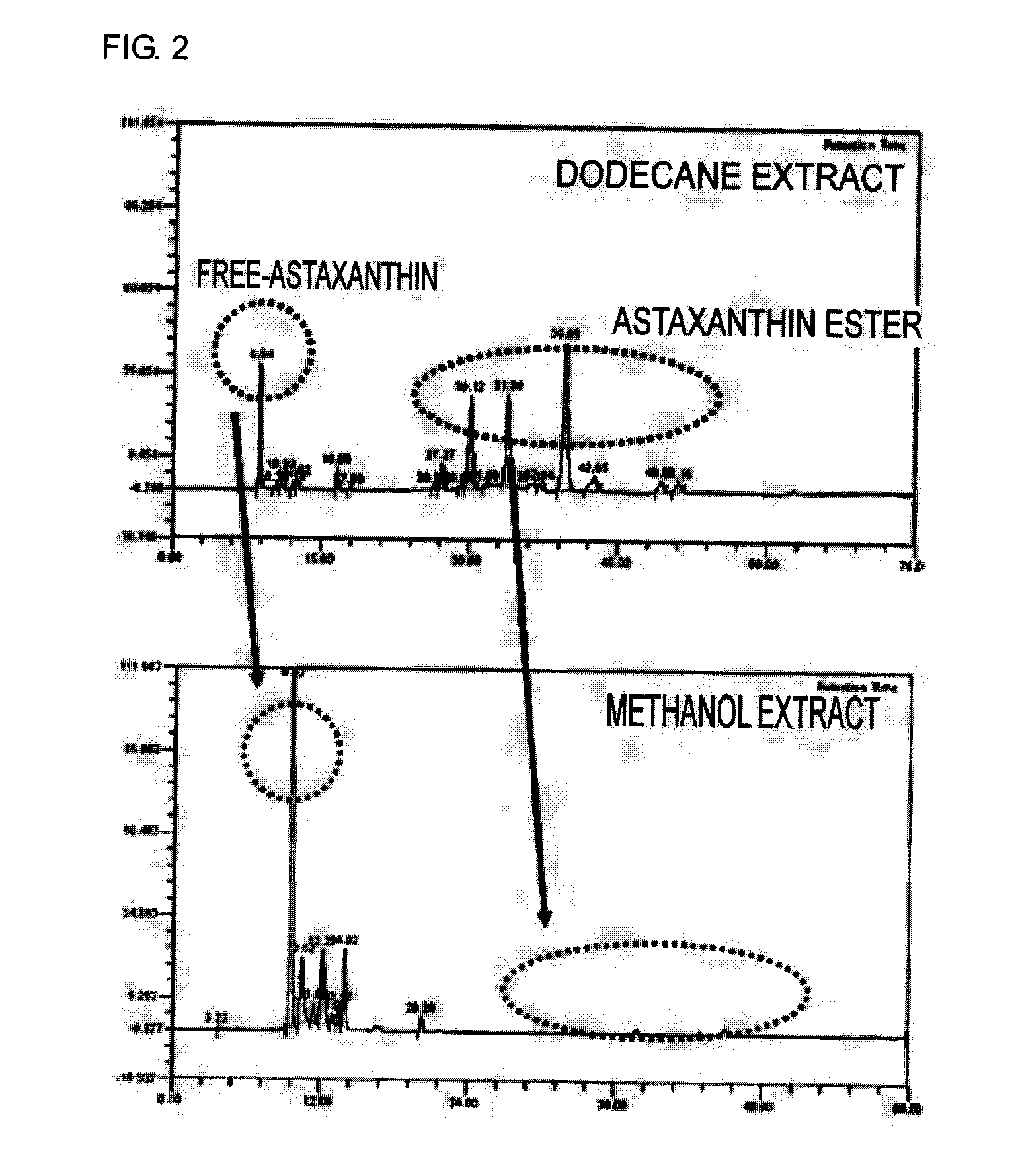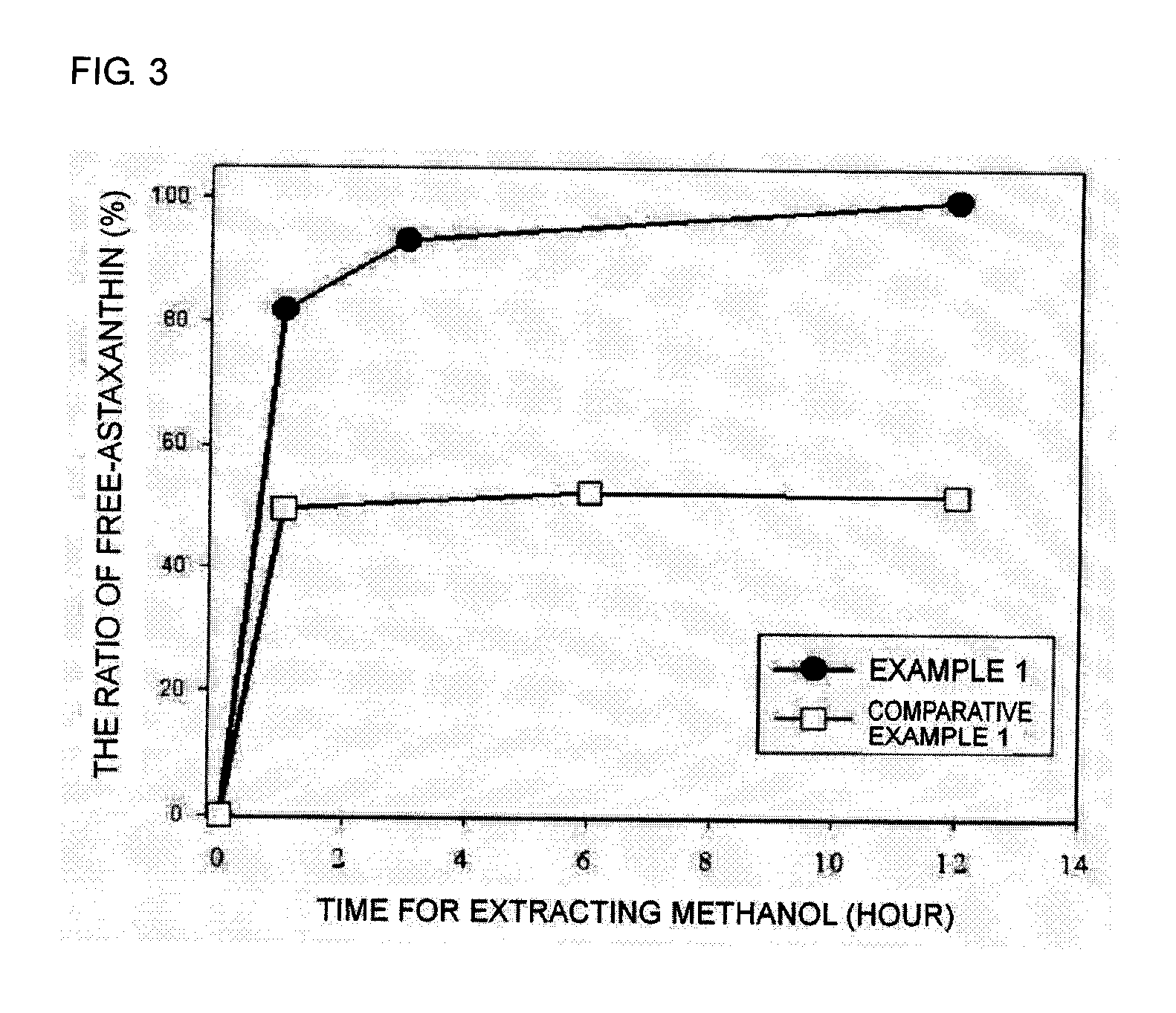Method for selective separation of free-astaxanthin from green algae haematococcus pluvialis
a technology of freeastaxanthin and green algae, which is applied in the field of selective separation of freeastaxanthin from green algae haematococcus pluvialis, can solve the problems of low growth rate, low cell density, and thick cell wall of green algae i>h. pluvialis /i>, and achieve the effect of maximizing the separation of free-astaxanthin
- Summary
- Abstract
- Description
- Claims
- Application Information
AI Technical Summary
Benefits of technology
Problems solved by technology
Method used
Image
Examples
example 1
Selective Separation of Free-Astaxanthin
[0033] A well-cultured red H. pluvialis cyst cell was subjected to two step-two phase solvent extraction process shown in FIG. 1, thereby separating free-astaxanthin selectively with high efficiency.
[0034] (Step 1) A cell culture containing H. pluvialis cyst cell and an alkane solvent dodecane were incorporated into the extraction process of the step 1 with 1:1 volume ratio, and then were mixed vigorously. After cell wall loss and extraction of astaxanthin into the dodecane solvent are completed, the mixed solution was standing for a few minutes, and the dodecane extract was spontaneously phase-separated from the cell culture by density difference.
[0035] (Step 2) The dodecane extract obtained from the step 1 was incorporated into the extraction process of the step 2, and then was mixed with an alcohol solvent methanol with 1:1 volume ratio. Most of the astaxanthin extract in dodecane had astaxanthin ester form as ascertained in the result o...
example 2
Separation Method Employing the Recycled Dodecane
[0038] Since the dodecane from which the astaxanthin material was completely extracted in Example 1 hardly comprised astaxanthin material, the dodecane was recycled to the extraction process of the step 1 and reused in extracting astaxanthin material from H. pluvialis cell culture. The process of extracting free-astaxanthin from the dodecane extract was performed as the same as in Example 1, and the results are shown in FIG. 4.
[0039] As shown in FIG. 4, even though the dodecane solvent was recycled and reused 3 times, the recovery rate of astaxanthin was more than 80% compared to that in case of using new dodecane solvent.
[0040] As described in the above, the present invention can not only maximize the efficiency of separating astaxanthin in high concentration by providing a very simple process technique capable of recovering free-astaxanthin selectively from H. pluvialis culture with high efficiency, but also realize the economica...
PUM
| Property | Measurement | Unit |
|---|---|---|
| density | aaaaa | aaaaa |
| chemical structure | aaaaa | aaaaa |
| molecular structure | aaaaa | aaaaa |
Abstract
Description
Claims
Application Information
 Login to View More
Login to View More - R&D
- Intellectual Property
- Life Sciences
- Materials
- Tech Scout
- Unparalleled Data Quality
- Higher Quality Content
- 60% Fewer Hallucinations
Browse by: Latest US Patents, China's latest patents, Technical Efficacy Thesaurus, Application Domain, Technology Topic, Popular Technical Reports.
© 2025 PatSnap. All rights reserved.Legal|Privacy policy|Modern Slavery Act Transparency Statement|Sitemap|About US| Contact US: help@patsnap.com



